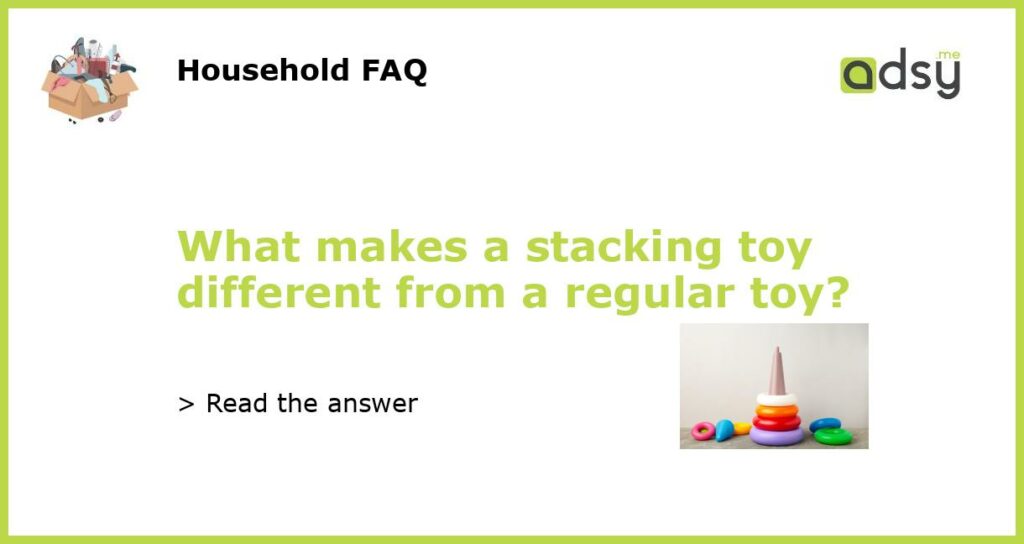What is a Stacking Toy?
A stacking toy is a type of toy that is designed to help children develop their hand-eye coordination and problem-solving skills. These toys typically consist of a set of different-sized rings or blocks that can be stacked on top of each other to form a tower. The objective is to stack the rings or blocks in the correct order, from largest to smallest, without the tower toppling over. Stacking toys come in a variety of shapes and sizes, ranging from simple wooden blocks to more complex designs with different colors and textures.
The Benefits of Stacking Toys
One of the main benefits of stacking toys is that they help children develop their fine motor skills. As children manipulate the rings or blocks, they are practicing their ability to grasp and release objects, as well as their hand-eye coordination. This is an important skill for future activities such as writing and using utensils.
Stacking toys also promote problem-solving and critical thinking skills. As children try to build a stable tower, they must figure out the best way to balance the rings or blocks. They learn about cause and effect, experimenting with different stacking methods to see what works and what doesn’t. This type of problem-solving can help children develop their logical reasoning skills.
Furthermore, stacking toys can also teach children about spatial awareness and concepts such as size and proportion. As they stack the rings or blocks, they are learning about concepts such as “big” and “small” and how objects can fit together to create a larger structure. These early math skills can be foundational for later learning.
Differences between Stacking Toys and Regular Toys
While stacking toys are a type of toy, they have some key differences from regular toys. Regular toys are typically designed for entertainment and play, while stacking toys have a specific developmental focus. Stacking toys are specifically designed to help children develop their fine motor skills, hand-eye coordination, problem-solving skills, and spatial awareness.
Regular toys can be any type of toy, such as stuffed animals, action figures, or dolls. They may have educational value, but their primary purpose is often to provide amusement or entertainment. Stacking toys, on the other hand, are explicitly designed to support children’s development in specific areas.
Another difference is the level of complexity. Regular toys can vary widely in terms of their complexity and age appropriateness, but stacking toys tend to be more structured and have a clear objective. Stacking toys typically have a specific set of rings or blocks that need to be stacked in a certain order, whereas regular toys may have a more open-ended play experience.
Choosing the Right Stacking Toy
When choosing a stacking toy for your child, there are a few factors to consider. First, consider the age appropriateness of the toy. Some stacking toys are designed for infants and toddlers, while others are more suitable for older children. Look for toys that are labeled with the recommended age range.
Next, consider the materials and safety of the toy. Stacking toys should be made from child-safe materials, such as non-toxic plastics or natural wood. Avoid toys with small parts that could pose a choking hazard.
Finally, think about the features and design of the stacking toy. Some stacking toys have additional features, such as different textures or colors, that can enhance the sensory experience for children. Consider your child’s interests and preferences when choosing a design.
A stacking toy is a type of toy that is specifically designed to help children develop their fine motor skills, hand-eye coordination, problem-solving skills, and spatial awareness. These toys provide a structured learning experience while also being engaging and fun for children. By selecting the right stacking toy, parents can support their child’s development and provide them with a valuable learning tool.






